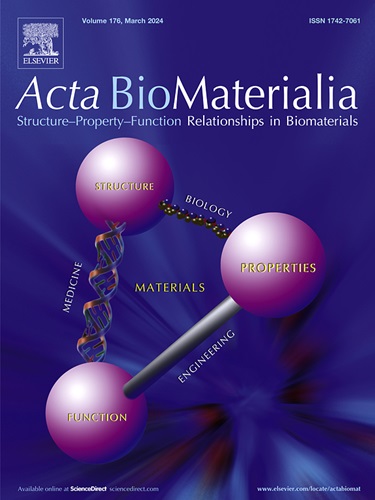Deep learning assisted prediction of osteogenic capability of orthopedic implant surfaces based on early cell morphology
IF 9.4
1区 医学
Q1 ENGINEERING, BIOMEDICAL
引用次数: 0
Abstract
The surface modification of titanium (Ti) and its alloys is crucial for improving their osteogenic capability, as their bio-inert nature limits effective osseointegration despite their prevalent use in orthopedic implants. However, these modification methods produce varied surface properties, making it challenging to standardize criteria for assessing the osteogenic capacity of implant surfaces. Additionally, traditional evaluation experiments are time-consuming and inefficient. To overcome these limitations, this study introduced a high-throughput, efficient screening method for assessing the osteogenic capability of implant surfaces based on early cell morphology and deep learning. The Orthopedic Implants-Osteogenic Differentiation Network (OIODNet) was developed using early cell morphology images and corresponding alkaline phosphatase (ALP) activity values from cells cultured on Ti and its alloy surfaces, achieving performance metrics exceeding 0.98 across all six evaluation parameters. Validation through metal-polyphenol network (MPN) coatings and cell experiments demonstrated a strong correlation between OIODNet's predictions and actual ALP activity outcomes, confirming its accuracy in predicting osteogenic potential based on early cell morphology. The Osteogenic Predictor application offers an intuitive tool for predicting the osteogenic capacity of implant surfaces. Overall, this research highlights the potential to accelerate progress at the intersection of artificial intelligence and biomaterials, paving the way for more efficient screening of osteogenic capabilities in orthopedic implants.
Statement of significance
By leveraging deep learning, this study introduces the Orthopedic Implants-Osteogenic Differentiation Network (OIODNet), which utilizes early cell morphology data and alkaline phosphatase (ALP) activity values to provide a high-throughput, accurate method for predicting osteogenic capability. With performance metrics exceeding 0.98, OIODNet's accuracy was further validated through experiments involving metal-polyphenol network (MPN) coatings, showing a strong correlation between the model's predictions and experimental outcomes. This research offers a powerful tool for more efficient screening of implant surfaces, marking a transformative step in the integration of artificial intelligence and biomaterials, while opening new avenues for advancing orthopedic implant technologies.

求助全文
约1分钟内获得全文
求助全文
来源期刊

Acta Biomaterialia
工程技术-材料科学:生物材料
CiteScore
16.80
自引率
3.10%
发文量
776
审稿时长
30 days
期刊介绍:
Acta Biomaterialia is a monthly peer-reviewed scientific journal published by Elsevier. The journal was established in January 2005. The editor-in-chief is W.R. Wagner (University of Pittsburgh). The journal covers research in biomaterials science, including the interrelationship of biomaterial structure and function from macroscale to nanoscale. Topical coverage includes biomedical and biocompatible materials.
文献相关原料
公司名称
产品信息
索莱宝
Rhodamine labeled phalloidin (TRITC Phalloidin)
麦克林
Tannic acid (TA)
 求助内容:
求助内容: 应助结果提醒方式:
应助结果提醒方式:


